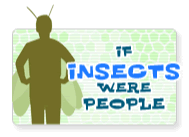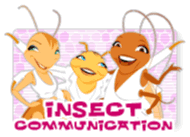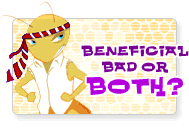The simple, educational bug activities below will develop writing, research, biology
and computer skills. Below you will find bug and insect activities to do with a
bug or insects.
Activity #1: If Insects Were People

A good way to remember something is to compare it to things with which we are familiar.
That is why this activity – which requires students to personify a certain
insect – has the potential to be quite memorable, educational and humorous.
The purpose of this activity is to answer the question, "If my insect was
a person, what kind of job would it have?"
Begin by dividing the class into groups and assigning them an insect. Examples include
a cockroach, an ant, a fly, a ladybug, a spider or a termite. Give the students
time to research their insect. The Terminix Pest Library is a great research tool
that categorizes insects and pests by their characteristics, behavior and habitat.
Once they have compiled their research, they can begin to brainstorm characteristics
and behaviors the insect has that people in a certain line of work also have. Some
things you may expect to hear are, "If an ant was a person, it would be an
architect" or "If a cockroach was a person, it would always be getting
fired because it’s so dirty."
Have the groups write a 1-page explanation about their choice and present an illustration
of their insect doing the line of work they chose as being suitable.
If students seem stumped and can’t have a hard time coming up with ideas of
jobs, you can refer them to one of the following websites for inspiration:
Activity #2: Insect Communication
We all know insects can't talk, but they do communicate. One way they do so is through
their sense of smell. This fun activity is designed to get students to see the world
from a bug's point of view. (It's also a great excuse to enforce the "no talking"
rule!)

To prepare for this in-class activity, count the number of students you have and
divide it by two. This will tell you how many scents you will need. Then gather
a variety of strong scents like vinegar, olive oil, garlic, vanilla extract, perfume,
citrus juice, pickle juice, menthol, root beer, etc. Wet two cotton balls with each
of these scents and put one ball in every cup. You should have as many cups as you
have students and a pair of cups for every scent.
On the day of the activity, tell the students that insects know which other insects
are of a similar species through smell. Next, distribute one cup randomly to every
student. Tell your students that one other person has the same scent as they do
and the object of the activity is to find that person. No talking is allowed. You
may want to conduct the activity outside to make it more challenging.
Questions to ask after the activity
- Was it easy to find your partner?
- How confident were you that you’d found your partner? Were there any distractions
or barriers to the "communication" process?
Activity #3: Beneficial, Bad or Both

Pest control is a multi-million dollar industry. Homeowners are realizing that it
is better to invest in pest control today than pay for damages tomorrow. But not
all bugs are bad. For example, there are many bugs appreciated by gardeners everywhere
for eating other bugs that could be very damaging to plant life. Some gardeners
even purchase these beneficial bugs and set them free in their gardens.
Have your students write a paper highlighting a common beneficial bug, a common
pest, and a bug that can fall into both categories. No answers will be wrong, as
long as they can back up their assertions with facts.
Activity #4: Living Habitats

One of the most memorable ways for students to learn about bugs is to be able to
observe them in action! There are many kits that you can order that include live
bugs. There’s no better way to witness the metamorphosis of a ladybug or burrowing
of an ant community. Here are just a few links to websites that offer these kits: